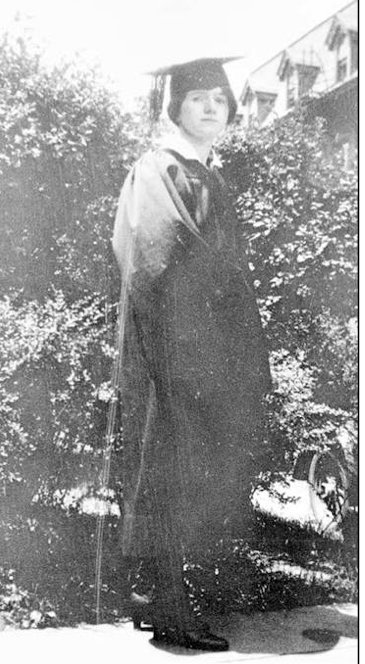
Rachel Carson, from the Rachel Carson Collection, Chatham University, 1929.

Growing up in Nature
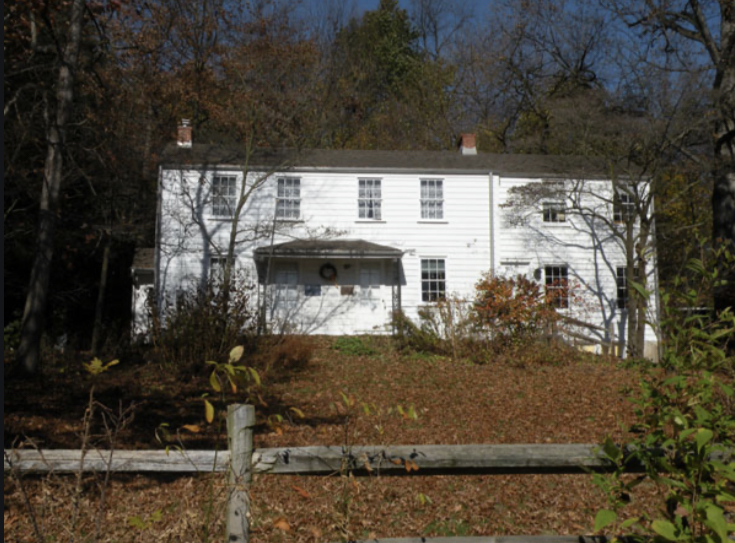
Rachel Carson's Birthplace, 613 Marion Avenue, Springdale, Pennsylvania, Wikimedia Commons, 7 Nov 2009
Rachel Carson, born in Springdale, Pennsylvania on May 27, 1907, grew up on a farm just outside Pittsburgh. Her childhood was immersed in nature. Writing was her pastime, getting published by age 10. Her mom homeschooled her, sharing her love of nature with Rachel, and beginning her lifelong mission to keep it safe. She saw firsthand the effects of pollution.
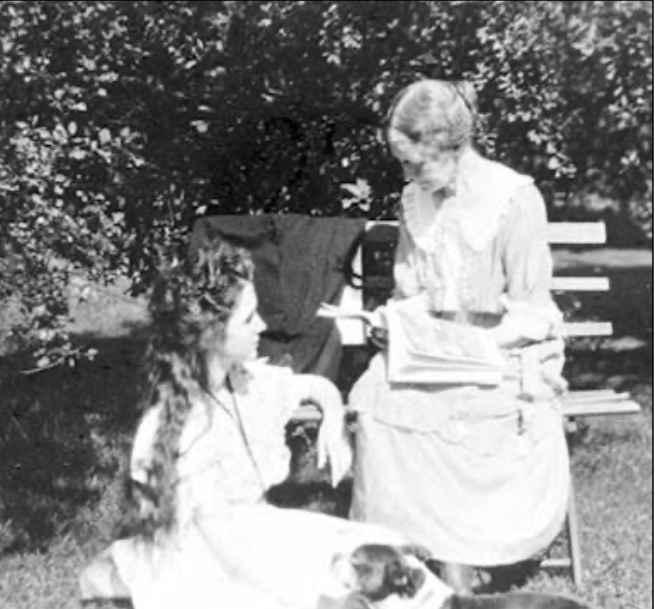
Rachel Carson and her mother, courtesy of U.S. Fish & Wildlife Services
"Springdale was known for its quaint and rural charm but all of this was changed rapidly in the early nineteen hundreds. The Allegheny River allowed for iron to be sent to Pittsburgh…Oil moved down the river as well and there was also wood from the heavy logging of the Appalachians. The river and the shoreline quickly became polluted."
~ Anna Nevenic, 2005
Rachel's first love was writing about nature. In college she found a way to tie the two by studying biology. She earned the reputation of being a well respected scientist and famous author.
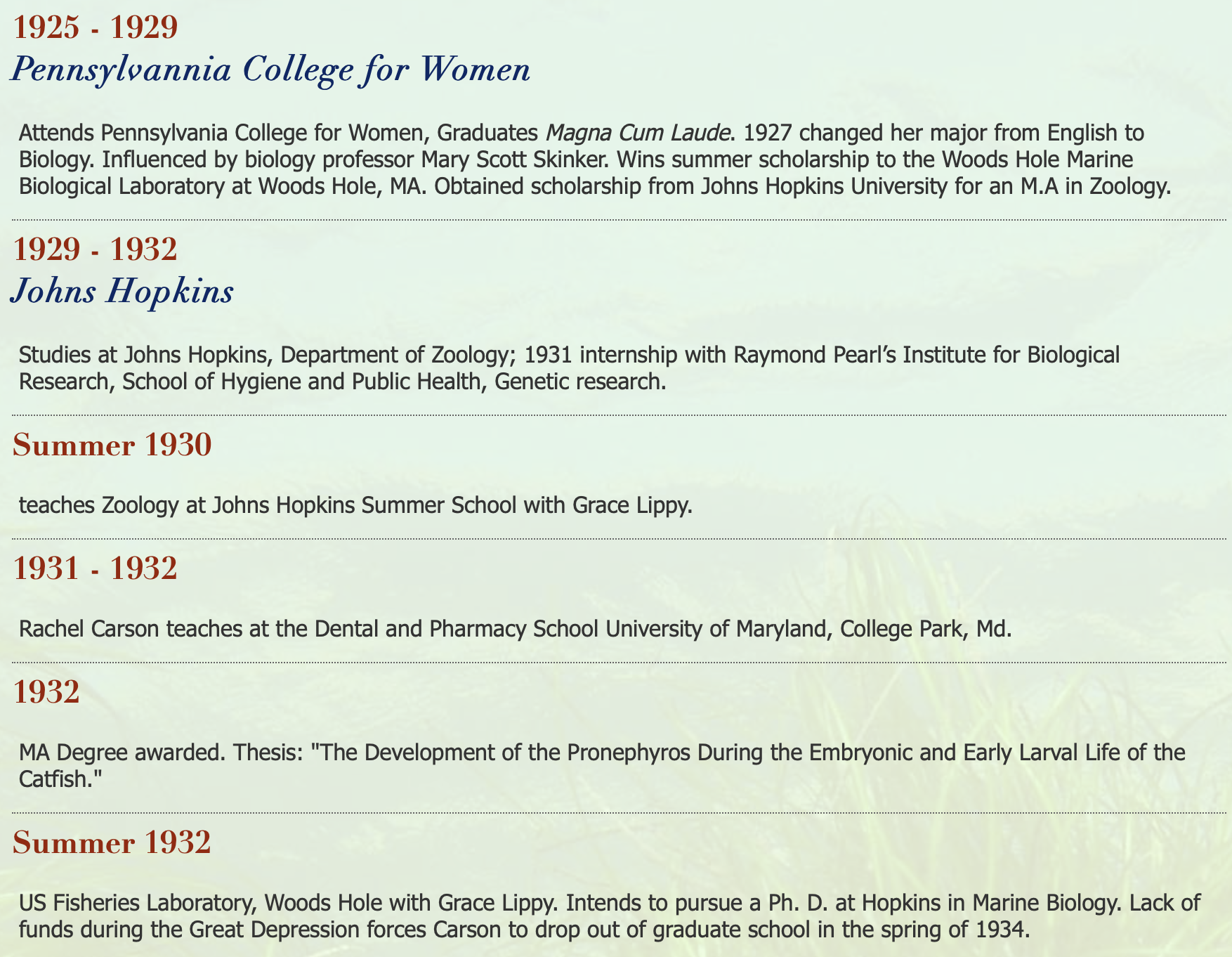
~ Taken from Rachelcarson.org Website, managed by Linda Lear, accessed 15 Jan 2020

Rachel Carson, from the Rachel Carson Collection, Chatham University, 1929.
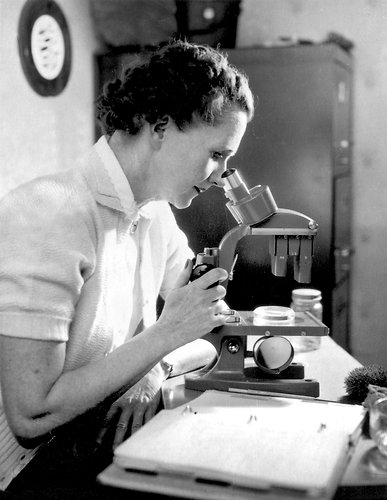
Rachel Carson, Brooks Studio, 1951, from the Rachel Carson Council.
After school, she begins working for the US Fish and Wildlife Service. Below are examples of her first writings to educate the public on wildlife refuges.
"If you travel much in the wilder sections of our country, sooner or later you are likely to meet the sign of the flying goose - the emblem of the national wildlife refuges. You may meet it by the side of a road crossing miles of flat prairie in the Middle West, or in the hot deserts of the Southwest. You may meet it by some mountain lake, or as you push your boat through the winding salty creeks of a coastal march. Wherever you meet this sign, respect it. It means that the land behind the sign has been dedicated by the American people to preserving, for themselves and their children, as much of our native wildlife as can be retained along with our modern civilization. Wild creatures, like men, must have a place to live. As civilization creates cities, builds highways, and drains marshes, it takes away, little by little, the land that is suitable for wildlife. And as their space for living dwindles, the wildlife populations themselves decline. Refuges resist this trend by saving some areas from encroachment, and by preserving in them, or restoring where necessary, the conditions that wild things need in order to live."
~ Rachel Carson, scientist and chief editor, "Conservation in Action" series, U.S. Fish and Wildlife Service
CLICK ON IMAGE TO RIGHT AND SLIDE BAR SCROLL DOWN
Rachel Carson, Editor, "Conservation in Action," Number One, 1947
Rachel Carson was fascinated by the sea. In 1953, she had a summer cottage built on the coast of Maine. By 1955, she had published 3 books, each meeting with increased readership.
"If there is poetry in my book about the sea, it is not because I deliberately put it there, but because no one could write truthfully about the sea and leave out the poetry."
~ Rachel Carson, Acceptance speech, National Book Award for Non-Fiction, 1952

Rachel Carson, 1941
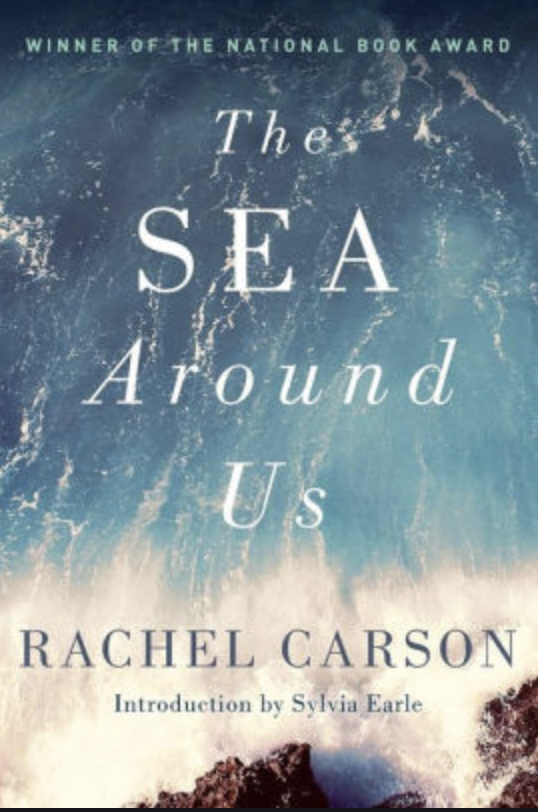
Rachel Carson, 1951
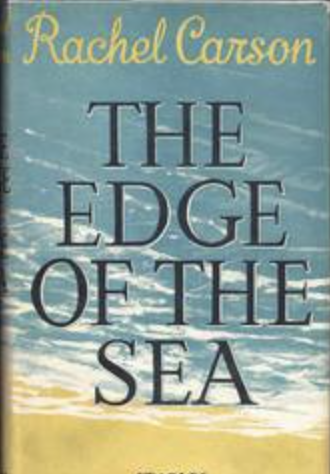
Rachel Carson, 1955
"Her first book, Under The Sea-Wind (1941) was a gripping account of the interactions of a sea bird, a fish and an eel -- who shared life in the open seas. A canny scholar working in government during World War II, Carson took advantage of the latest scientific material for her next book, The Sea Around Us (1951) which was nothing short of a biography of the sea. It became an international best-seller, raised the consciousness of a generation, and made Rachel Carson the trusted public voice of science in America. The Edge of the Sea (1955) brought Carson’s focus on the ecosystems of the eastern coast from Maine to Florida. All three books were physical explanations of life, all drenched with miracle of what happens to life in and near the sea."
~ Rachel Carson Society Website Editors